Today’s Pit Stop History Health Walk involved us exploring a few of Norwich’s ‘notable’ trees. Fortunately, we had horticultural expert, Nik Thomson, join us and he was able to provide loads of insights into some of the city’s wonderful ‘woody plants’ (as he describes ‘trees’). Norwich has around 750,000 trees, which is c3.75 trees per citizen, so we ought to get to know them a bit better.
Among our stopping points was the cloister garth of the Norwich University of the Arts buildings on St George’s Street. Nik wanted to talk to us about the lovely Mulberry tree that is growing there.
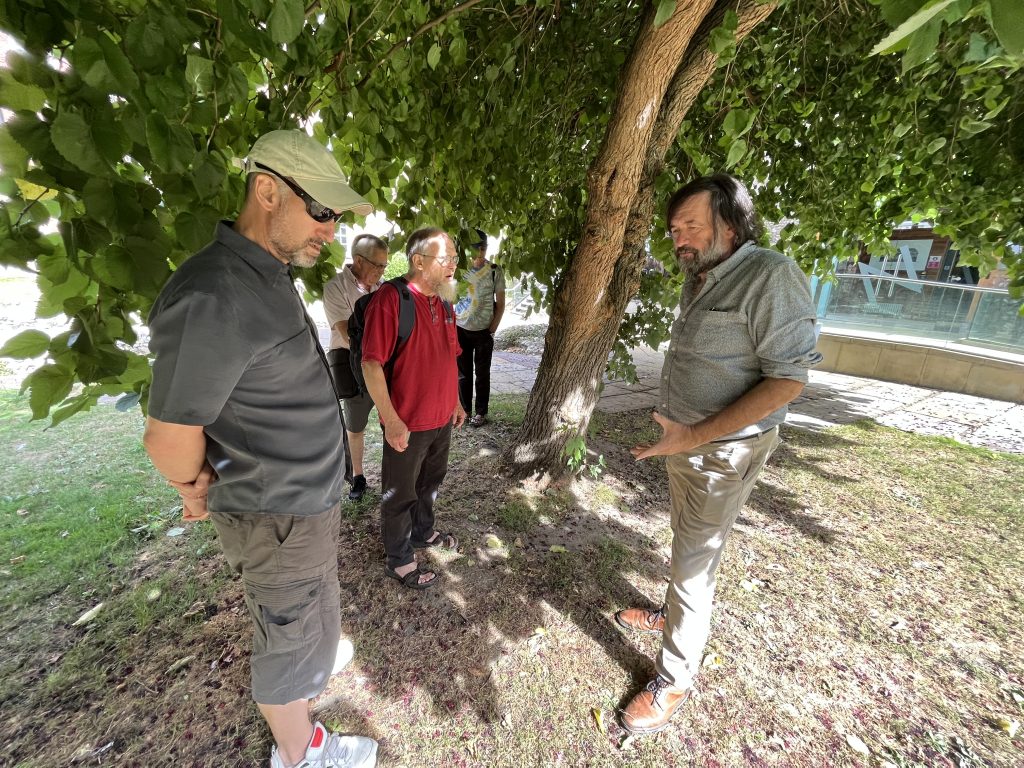
Nik and some group members under the canopy of the mulberry tree, with lots of squashed ‘spent’ berries underfoot
As well as explaining to us that, apparently, Mulberry ice-cream is absolutely delicious, we also learned that Mulberry is one of the few trees that you can grow by ‘bough propogation’ ie if you set a freshly cut bough from it upright in the ground it will root. I was also struck by the rapid growth of this still relatively young tree (c25 years old) and how it seems to be thriving within the site of the former Blackfriars. Fi
Location-wise, our main focus was Chapelfield Park, where – according to the Norwich Society – there are over 90 different species of tree. We started, by looking at the London Plane tree that stands near the park cafe.
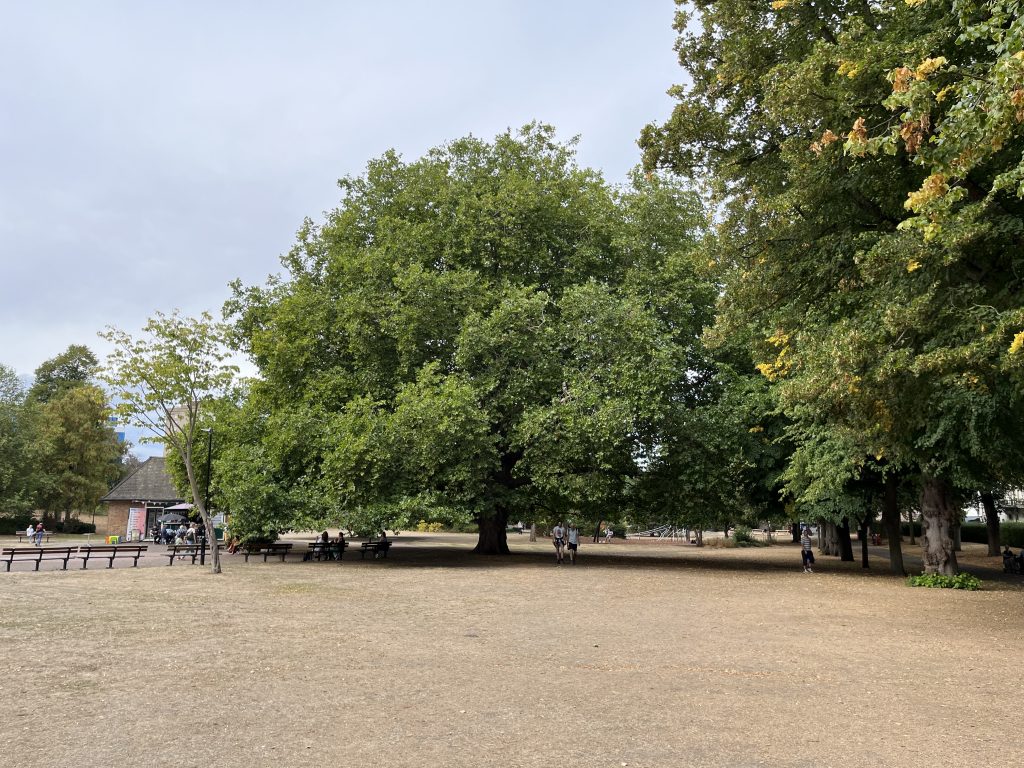
The London Plane tree
This was badly damaged by the great gale in 1987. In the wake of the storm, with such a huge amount of damage to trees it was some time before this one received ‘official’ attention from the council’s arboricultural staff. By the time they got around to assessing it, an unknown person had braced the tree’s split crown of limbs with steel bands. The team subsequently added a ‘cat’s cradle’ of steel cables to stablise it and the tree survives to this day. To get a sense of scale I asked Pit Stop member, Paul, to stand by the trunk…
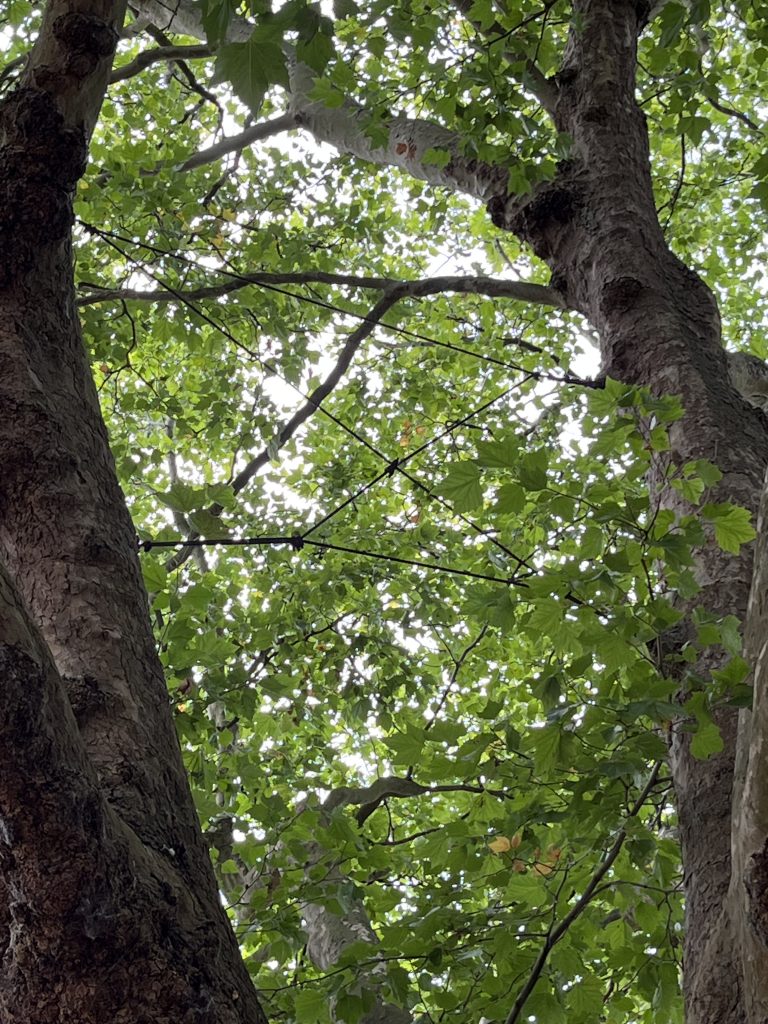
See the intersecting ‘cat’s cradle’ of steel bands high among the branches of this magnificent tree
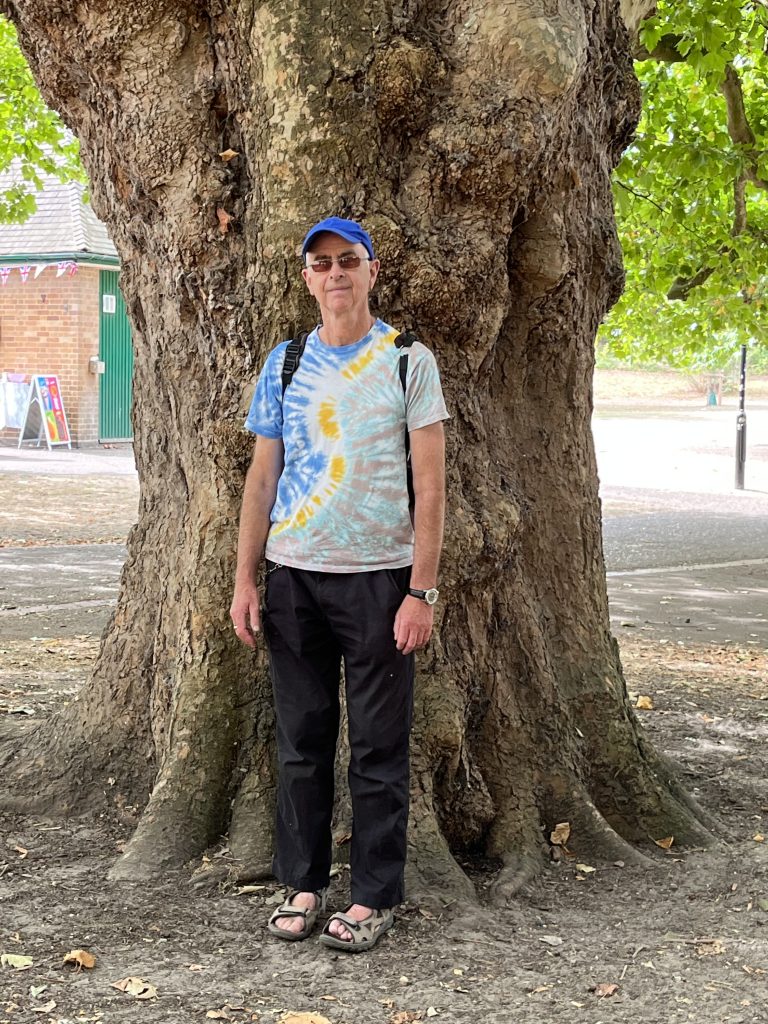
Pit Stop’s Paul: a Londoner by birth, standing by a London Plane
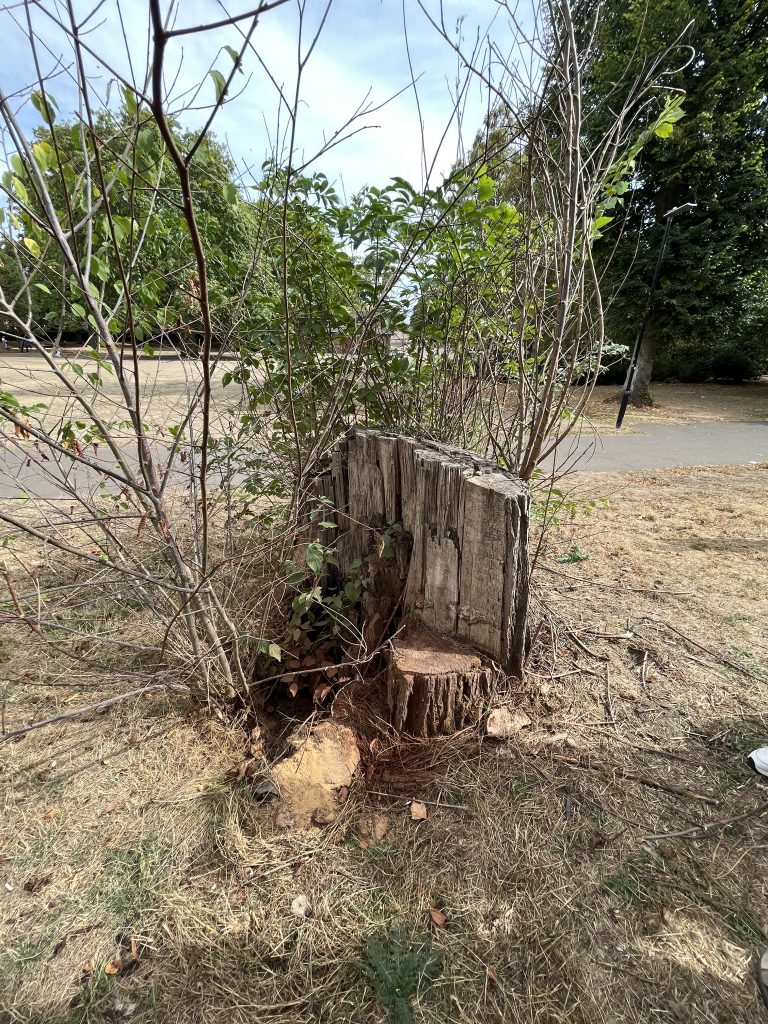
The Huntingdon Elm stump. Note the Elm saplings growing around it – life still grows on!
We also looked at the stump of the last remaining (Huntingdon) elm, that fell victim to the benignly-named, ‘Storm Doris’ in 2018. The Huntingdon Elm is relatively resistant to Dutch Elm disease that decimated so many elms in this country. It is a ‘cultivar’ (produced by human intervention) from crossing the Wych Elm with the Smooth-leaved Elm and was first raised from seed in Huntingdon, Cambridgeshire, in 1750.
At the end of the walk we retired to The Feed’s delightful ‘Rest Cafe‘ in nearby Churchman House. This seemed entirely appropriate as it was once the home of Thomas Churchman who, in 1749, planted three avenues of elms in Chapel Field.
Postscript: this walk was based on one of those within Rex Hancy’s excellent, ‘Notable Trees of Norwich’ (2005).

Recent Comments